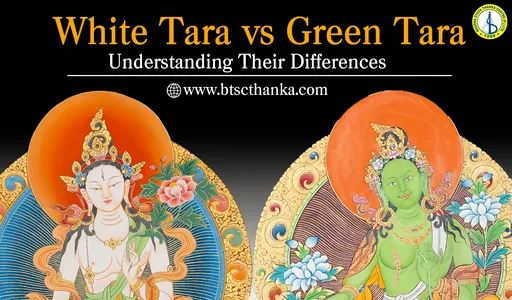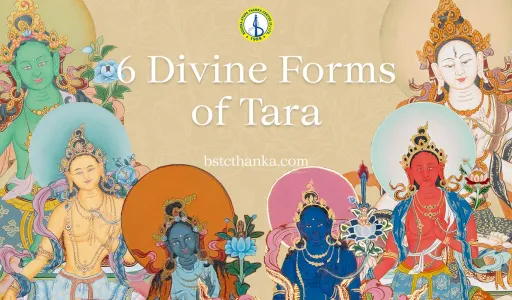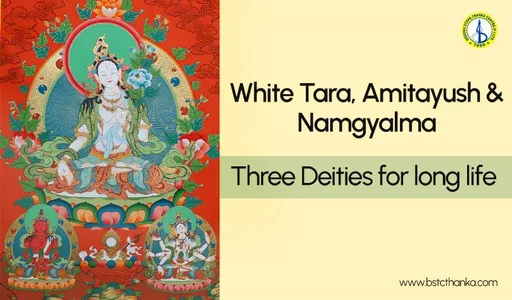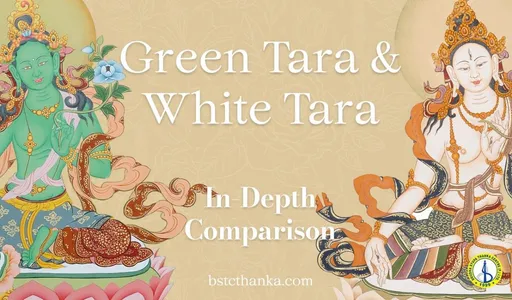
Who is Green Tara in Buddhism?: Deity of Peace and Prosperity
Green Tara, also known as Bhrikuti, is a cherished figure in Buddhism and is known for her role as the deity of peace and prosperity. She represents the qualities of swift action and compassion, offering protection and support to those in need. With her vibrant green color symbolizing growth and harmony, Green Tara embodies the dynamic and nurturing aspects of spirituality.
In Buddhist practice, Green Tara is often called upon for guidance and assistance in overcoming obstacles. Her presence is believed to bring tranquility and success, making her a beloved figure for many who seek both spiritual and worldly blessings. In this blog, we’ll explore who Green Tara is, her significance in Buddhism, and how she can inspire peace and prosperity in our lives.
History and Origin of Green Tara Deity
The origins of Green Tara can be traced back to ancient Buddhism, where she emerged as a female bodhisattva and protector. Her name in Sanskrit is Syamatara, where "Syama" means green and "Tara" means star or savior. According to legend, Green Tara was born from a tear of compassion shed by Avalokiteshvara, the bodhisattva of compassion. As Buddhism spread to Tibet in the 7th century, the worship of Tara gained significant popularity, becoming an integral part of Tibetan Buddhist practices.
In Tibetan Buddhism, there's a well-known story about Green Tara's origins. It's said that she was once a princess named Yeshe Dawa, who was deeply devoted to the Buddha's teachings. When told she should pray to be reborn as a man to attain enlightenment, she vowed instead to reach enlightenment in female form. She then spent countless lifetimes helping others before finally becoming the enlightened Green Tara.
Green Tara's significance grew over time, and she became revered as one of the most important deities. She is often referred to as the "swift one" due to her readiness to help those in need. In Tibet, she is sometimes called "Tara the Liberator" and is associated with protection from the eight great fears: lions, elephants, fire, snakes, thieves, water, bondage, and evil spirits. These fears are often interpreted as both literal dangers and symbolic representations of inner obstacles.
Also Read: 4 Major Differences Between Green Tara and White Tara Deity
Role and Symbolism of Green Tara Deity
Green Tara is valued for her role as a saviouress who listens to the cries of beings trapped in saṃsāra, the cycle of birth and rebirth. She is believed to offer protection and deliverance from both worldly and spiritual dangers, swiftly responding to the needs of her devotees. Her compassion and readiness to help make her a beloved figure for those seeking peace and relief from life's challenges.
The Green Tara deity is rich in symbolic meaning, with each aspect of her iconography representing important spiritual concepts in Tibetan Buddhism. Some of the key symbols associated with Green Tara include:
1. Green Color:
Green Tara's distinctive green color represents nature, growth, and renewal. It highlights her vibrant, active nature and ability to respond to the needs of her devotees swiftly.
2. Lotus Flower:
Often seen sitting on a lotus flower, Green Tara embodies purity and spiritual awakening. The lotus symbolizes her rise above worldly concerns and her ability to maintain clarity and compassion despite challenges.
3. Hand Gesture:
Her right hand is typically shown in the gift-giving mudra (hand position), symbolizing her generosity and readiness to grant blessings. Her left hand often holds the stem of a blue lotus flower, representing her connection to wisdom and compassion.
4. Eyes:
Unlike White Tara, Green tara has only two eyes.. These eyes symbolize her keen awareness and ability to perceive the suffering of beings, demonstrating her readiness to offer help and remove obstacles.
Green Tara Mantra
The Green Tara mantra, "Om Tare Tuttare Ture Soha," is a powerful Buddhist prayer invoking Tara, the goddess of compassion and protection. Chanting this mantra is believed to remove obstacles, dispel fears, and bring peace and swift blessings. Tara embodies compassionate action, and reciting the Green Tara mantra invites her guidance to overcome difficulties and develop inner strength. It’s commonly practiced for healing, protection from harm, and to swiftly achieve spiritual goals.
Green Tara Thangka and Its Significance in Practitioners and Followers
People buy Green Tara thangkas for various reasons, including meditation, prayer, and inspiration. These beautifully painted artworks help practitioners focus during meditation, allowing them to connect more deeply with Green Tara’s compassionate energy. During prayer, the thangka serves as a sacred object that enhances devotion and spiritual practice. Many also display Green Tara thangkas in their homes or meditation spaces to remind themselves of her protective qualities and to draw inspiration from her presence. The thangka acts as both a spiritual tool and a source of beauty, supporting personal and spiritual growth.
Conclusion
Green Tara is a revered figure in Buddhism known for her dynamic qualities of peace and prosperity. Her vibrant green color, symbolic gestures, and additional eyes all reflect her role as a swift and compassionate savior, ready to offer protection and guidance. From her origins in ancient Buddhism to her integral role in Tibetan practices, Green Tara remains a powerful source of spiritual support and inspiration for many. Her presence in Buddhist art, such as thangkas, serves as a focal point for meditation and prayer, bringing tranquility and enlightenment to her devotees.
If you want to acquire Green Tara thangkas or explore other thankas, please get in touch with Boudha Stupa Thangka Store. We offer a range of beautifully crafted thankas to enhance your spiritual practice and bring a touch of Green Tara's compassion and grace into your life. Reach out to us for more information and to find the perfect thangka.
FAQs
Why do people pray to Green Tara?
People pray to Green Tara for her protection and guidance in overcoming difficulties. She is known for her swift action and compassion, helping devotees find peace, remove obstacles, and achieve spiritual and worldly success.
Is Green Tara a male or female?
Green Tara is a female deity in Buddhism. She embodies compassion and protection and is often depicted as a nurturing figure who helps those in need.
What does the color of Green Tara symbolize?
The color of Green Tara symbolizes nature, growth, and renewal. Her vibrant green hue represents her active and dynamic nature, reflecting her ability to swiftly respond to and aid those in need.









